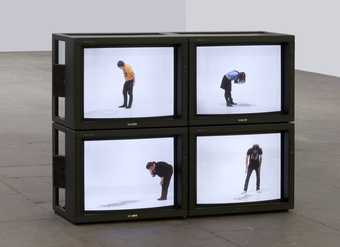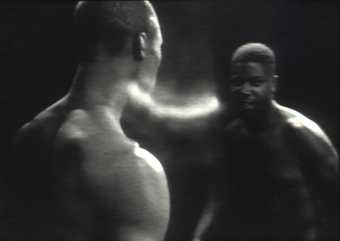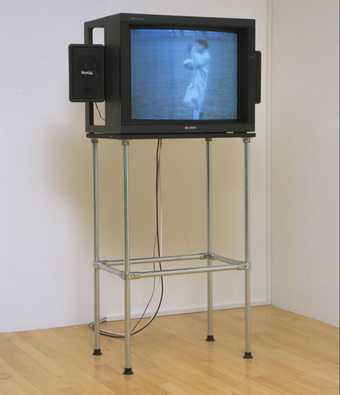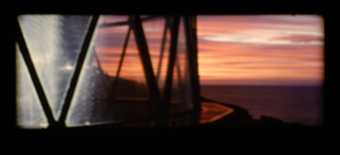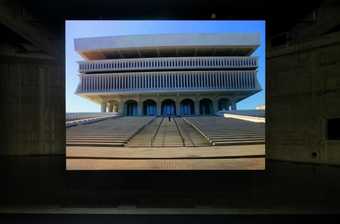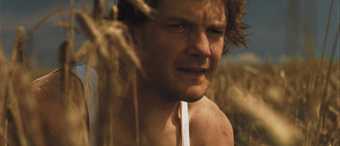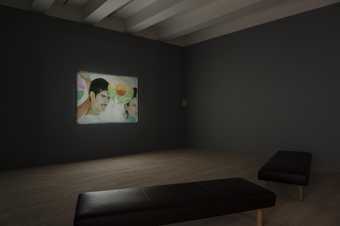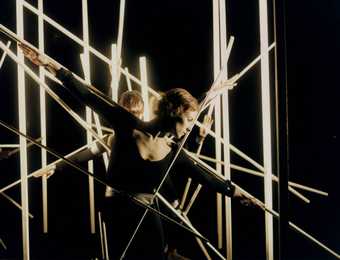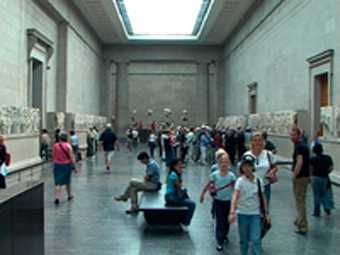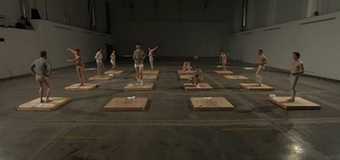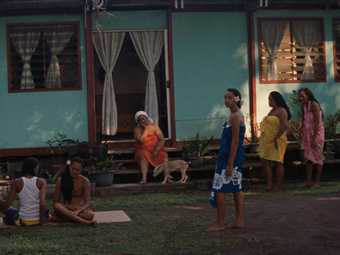
Not on display
- Artist
- Bethan Huws born 1961
- Medium
- Film, 16 mm, shown as video, high definition, projection, colour and sound (stereo)
- Dimensions
- 12min
- Collection
- Tate
- Acquisition
- Purchased 2007. The Artangel Collection at Tate
- Reference
- T12405
Summary
Singing for the Sea is a twelve-minute film by the Welsh artist Bethan Huws. Shot in the summer of 1993, the film documents a group of eight female Bulgarian singers performing on a beach in Alnwick, Northumberland, on the coast of the North Sea. Dressed in traditional Bulgarian costume, the women – known collectively as the Bistritsa Babi (or Bistritsa Grandmothers) – are seen singing and dancing at the water’s edge on the otherwise empty beach. Sequences of the performance are juxtaposed with close-ups of the ebbing tide, but the film was otherwise shot and edited with a minimum of filmic effects. Co-commissioned by Artangel and Antwerp 93, the film was the result of a performance, organised by Huws together with Artangel, titled Concert for the Sea, which took place at high tide in front of a live audience over three consecutive evenings in July 1993.
The Bistritsa Babi hail from a mountain village near Sofia, and still perform the traditional dances and polyphonic open-air singing particular to the Shoplouk region of Bulgaria. Their repertoire of songs has been passed down from mother to daughter for centuries. Huws was drawn to the polyphonic quality of eastern European singers: ‘they pull against each other in permanent tension’ she has explained (Huws 2005, p.66). When heard outside a Bulgarian speaking context, the meaning of the Bistritsa Babi’s archaic song becomes incomprehensible, its lyrics abstracted to become pure sense or sound.
Singing for the Sea records a poetic displacement: the transposition of the Bistritsa Babi from central Europe to the north east coast of England. In its specific attention to location, the film relates to Huws’s earlier site-specific sculptural installations such as Kunsthalle Piece, exhibited at Kunsthalle Bern in 1990, and Frankfurt Piece, exhibited at Luis Campana Gallery in 1991, in which the existing floors of the galleries were subtly reconfigured to effect a phenomenological change. On the subject of the importance of the location of the Bistritsa Babi’s performance Huws has commented: ‘I think it was more than a framing. It was an integral, read-made component or part. I also thought of the piece as a ready-made equivalent of the floor.’ (Huws 2005, p.68.)
Singing for the Sea was first exhibited at the Museum of Contemporary Art, Antwerp (MUHKA) as part of the city’s year as Cultural Capital of Europe in the autumn of 1993. Originally shot on 16 mm film, the work is exhibited as a high-definition video projected onto a wall. The curator Iwona Blazwick has observed that, installed in this way, the work ‘firmly occupies the genre of the seascape. And within this art historical context, the singing women become protagonists of some ancient myth’ (Blazwick 2005, pp.56–9). In its examination of the liminal spaces between land and sea, and between nature and culture, Singing for the Sea exemplifies Huws’s primary interests in language, memory, and the specificities of place.
Further reading
Gregor Muir, ‘Bethan Huws: A Work for the North Sea’, Frieze, no.12, September–October 1993, http://www.frieze.com/issue/review/bethan_huws1/, accessed 12 August 2014.
Iwona Blazwick, ‘The Sculpture of Song’ in Bethan Huws: Singing to the Sea, Paris and London 2005, pp.55–9.
Bethan Huws, interview with James Lingwood, in Bethan Huws: Singing to the Sea, Paris and London 2005, pp.65–71.
Isabella Maidment
August 2014
Does this text contain inaccurate information or language that you feel we should improve or change? We would like to hear from you.
Explore
- emotions, concepts and ideas(16,416)
-
- formal qualities(12,454)
-
- photographic(4,673)
- music and entertainment(2,331)
-
- singing(77)
- group(4,227)
- dress: nations/regions(272)
-
- Bulgaria(1)
- Bulgarian(555)
You might like
-
Martin Creed Work No. 837
2007 -
Sir Steve McQueen Bear
1993 -
Lucy Gunning The Horse Impressionists
1994 -
Mark Wallinger Angel
1997 -
Tacita Dean CBE Disappearance at Sea
1996 -
Tracey Emin Tracey Emin C.V. Cunt Vernacular
1997 -
Shirin Neshat Soliloquy
1999 -
Fikret Atay Rebels of the Dance
2002 -
Rodney Graham How I Became a Ramblin’ Man
1999 -
Jesper Just Bliss and Heaven
2004 -
Daria Martin Birds
2001 -
Daria Martin In the Palace
2000 -
Simon Martin Wednesday Afternoon
2005 -
Jesse Aron Green Ärztliche Zimmergymnastik
2008 -
Nashashibi/Skaer Why Are You Angry?
2017

